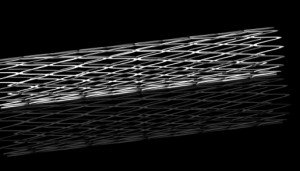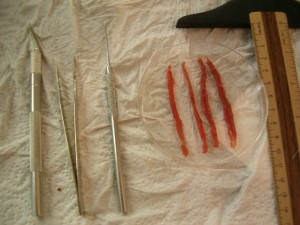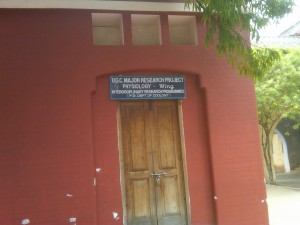Biosynthetic Muscle Motors part 1 by Monty K Reed
Biosynthetics is The Study of Living Systems and building working copies for engineering, rehabilitation medicine and robotics applications.
In 1986 when I came up with the term “biosynthetics” no one was using it. Today there are some web posts that claim biosynthetics is the same as biosynthesis, it is not. They may have the website registered but that does not make it science. I used the term first and it will always be what it is. It is very much like the exoskeleton work in that no one was doing it when I started. The reason I needed a new term was to differentiate from what bio-engineers are doing in growing replacement parts for people. The replacement parts business is related to what I am doing in biosynthetics but it is very different. The work is more “bio inspired” (quote from Robert (Bob) Full [researcher at UC Berkley]
at a Mechatronics EE595 lecture at the University of Washington 2007)
Bio-engineers need (really NEED) to make exact copies of muscles in order to install them successfully in living creatures. The need to be sure it is exactly like the original or rejection may come into being. Many have looked at the mechanism of operation of the rejection system in the body and it is possible to take ‘anti rejection’ medication to
slow down or inhibit the process but the dangers usually out-way the benefits when is comes to the surgical replacement of skeletal muscle. Of course is you are replacing a heart the medication is needed and the risk is worth it.
Some of the work I am doing in the lab may benefit bio-engineers who need to grow parts for a human leg that has been damaged in an accident but as I mentioned it is not the purpose.
In biosynthetics the idea is to use what I like about the living system and copy that. The biosynthetic muscle does not even have to be alive. It can be a nanotech machine. I envision a hybrid that will include synthetic materials and living components. I have been looking into ‘mesh’ or ‘lattice’ materials to combine with the living tissue.
Some polyesters may work well and the fibers are very affordable.
I attended another BIOE (bioengineering) lecture about a the UW (University of Washington) in 2007 where an undergrad was speaking about Heart stent design and the prefered material was NiTiNOL. Not for the memory alloy aspect but for the acceptance threshold. Most bodies do not reject NiTiNOL. “Wow” I thought to myself, almost out loud. NiTiNOL is Nickel Titanium from the Navel Ordinance Lab. It was a new alloy for warhead manufacture and it ends up saving lives every day in heart stent operations.
There may be a way to combine the NiTiNOL with muscle tissue and actually use the memory alloy aspects. For now I will continue combining muscle tissue with lattice materials and attempting different control routines. In my current lab in Georgetown (the industrial area south of downtown Seattle) I can only actuate the action potential simulation with electric impulse.
In the future They Shall Walk Institute building we will have better labs and will be able to experiment with calcium ion pump actuation. This will involve nanotechnology scale pumps and hoses interconnected with living muscle tissue and synthetic materials.
Quote from a February 2010 blog re-posted on the new site October 3, 2010 I said
“As a kid I dreamed about beef that you could grow in your fridge. I imagined astronauts would simply go to the fridge and cut off a slice of steak, chicken, lamb or pork then close the lid and the meat would continue to grow. It is possible and we can do it. Some day soon I believe the same technology I am using to grow muscle cells in a dish is a technology that I will be able to use to do just that and feed the world.”
The work of growing muscles could really save the world. I met with a professor in Vellore India who may collaborate with me in developing that very new meat that could be served in “non-veg” restaurants in India (non-veg means they serve meat) and other developing nations as well as the space stations, and “moon base” cities of the future. He has the talent, the resources and the legal permission to go after the PETA prize. My hands would be tied if I wanted to go after it in the USA.
I do not want to fight with the FDA so we will be doing our research in Vellore India.
When the government gives us permission we will conduct the final phases in this country.
See the next post for some details about the biosynthetic beef muscle and chicken muscle experiments.
###
If you enjoyed this blog post please tell your friends about it. October 1, 2010 these
blogs were moved to a server that can handle the 12,000 daily views. The work being done
at They Shall Walk is non-profit medical research to improve the quality of life of persons
with disabilities. The work includes but is not limited to the development of the
LIFESUIT Robotic Exoskeleton that allows paralyzed persons to walk. It is similar to the
$45 million DARPA / Department of the Army project with exoskeletons that includes the
Berkley BLEEKS, Sarcos Raytheon XO, as well as other classified military government projects.
The main difference is that the LIFESUIT Robotic Exoskeleton was the first of the current
projects and began in 1986. It is the only one focused on semi-autonomous robotics that
is for paralyzed persons first.
You can support this blog and the work being done at They Shall Walk by donating online
Donate
https://www.paypal.com/us/cgi-bin/webscr?cmd=_flow&SESSION=6vAZiYDXNM29aFzMD3h7SBCnguIYC1ArIWclu2y4BWU_w6vH6ord-9BaKxa&dispatch=5885d80a13c0db1f8e263663d3faee8dc18bca4c6f47e633b393e284a5f8a8f8
______________________________________________________________________________
Monty K Reed, Founder They Shall Walk http://www.facebook.com/TheyShallWalk
NEW Address: 6266 13th Ave S, Seattle, WA 98108 USA (206) 297-WALK
References:
http://polypedal.berkeley.edu/twiki/bin/view/PolyPEDAL/ProfessorsOffice
Biosynthetics: The Study of Living Systems and building working copies.
http://www.dominican.edu/query/ncur/display_ncur.php?id=3086
http://www.metacafe.com/watch/1021891/muscle_motor_biosynthetics_beef_rib_eye/
http://www.myvido1.com/AVYJESOdFbxEWV0F2VudWP_biosynthetic-cornea
http://www.dominican.edu/query/ncur/display_ncur.php?id=3048
http://www.dominican.edu/query/ncur/display_ncur.php?id=3021
http://search.dominican.edu/search?q=cache:sOrEFaTViBIJ:www.dominican.edu/query/ncur/list_ncur.php%3Fname%3D%26keyword%3D%26id%3D%26type_select%3D%26school_select%3D%26subject_select%3DBiosynthetics+monty+reed&access=p&output=xml_no_dtd&ie=UTF-8&client=default_frontend&site=default_collection&proxystylesheet=default_frontend&oe=ISO-8859-1
http://www.washington.edu/research/urp/students/achievement-conference.html
http://weekendamerica.publicradio.org/display/web/2008/06/11/montys_robot/
http://seattletimes.nwsource.com/html/localnews/2003007262_robot20m.html





13 Responses to “Biosynthetic Muscle Motors part 1”